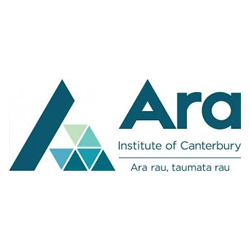
Learners’ Needs and Practice-Based Learning Informing Tertiary Teaching
Status
Completed: 1 December 2010
Project Details
A project completed in 2010, undertaken by Christchurch Polytechnic Institute of Technology, to use a collaborative research process to gather information to assist educators to actively connect teaching with workplace learning and to identify practice nurses’ learning needs regarding child and youth health as that is a priority, high impact field of learning for practice nurses.
Aims
The main aims of the project were:
- to identify the priority educational needs of practice nurses related to child and youth health
- to describe the practice-based learning experiences of these nurses
- to determine the implications of these findings for transforming curricula and teaching practices in workplace learning.
Methodology:
The project used a mixed methodology approach involving:
- modified Delphi technique to identify and prioritise educational needs
- individual interviews to determine features of successful practice-based learning experiences
- a focus group to determine implications of the phase 1 & 2 findings and make recommendations for transforming curricula and teaching practices for practice-based learning.
Team

Dr Philippa Seaton
Project Leader
Christchurch Polytechnic Institute of Technology (now Ara Institute of Technology)
Paul Watson
Christchurch Polytechnic Institute of Technology
Jane Mountier
Christchurch Polytechnic Institute of Technology
Deborah Sims
Christchurch Polytechnic Institute of TechnologyStatus
Funding
$9,974.00 (excl GST)
Key Findings
The key findings from the project included:
- Identifying learning needs is an important first step in planning workplace learning. The project identified 74 learning needs of practice nurses related to child and youth health.
- Deciding how to prioritise those learning needs is a complex process that is not a matter of simply reducing a long list of learning needs into a smaller list. Educational principles suggest that the relevance of a learning need to the learner’s work, the learner’s current level of skill and knowledge in the area, and their interest in learning more are all considerations in prioritising content for workplace learning.
- Which educational needs are given priority will depend on whether it is relevant, the level of skill and knowledge required, interest in learning, or some combination of the above.
- While a range of delivery methods is required in order to address a range of learning styles, the majority of the practice nurses showed a clear preference for kinaesthetic methods of learning delivery.
- The interview phase was used to gain richer information about how nurses learned successfully in practice. Themes were identified which highlighted the complexity of learning in practice and the complicated interplay of the individual nurse and systemic factors in professional practice-based learning.
- Information shared by the nurses in this phase included successful learning experiences that could guide practice-based learning, and also insights into those elements that constrained learning and revealed the need to consider different ways to support and strengthen practice-based learning.
Key Recommendations
The key recommendations from the project are derived from the project findings and are intended to guide and support practice-based learning:
Educational Strategies
Strategic educational planning | Develop responsive and innovative strategic educational planningthat is future-focused, responsive to changes in the health sector, and anticipates future learning needs. Courses and qualifications need to be offered at both graduate and Masters levels and include opportunities for practice nurses to develop leadership skills.
Learning and practice needs | Promote course evaluations that inform design and delivery to ensure courses meet the learning and practice needs of nurses. Evaluating course effectiveness both at the completion of formal study, and when learning is subsequently embedded in practice, is recommended.
Industry and education providers’ collaboration | Enhance industry and education providers’ collaboration in order to create courses which are relevant, appropriate, based on current best practice, and meet learners’ needs to develop both core competencies and expert knowledge.
Context of practice-based learning | Recognise the importance of context in practice-based learning through courses which acknowledge differences between practices, reflect the holistic and dynamic nature of health needs, and utilise learners’ knowledge and experience. Strategies to develop and extend practice nurses’ critical thinking and decision-making abilities are essential.
Information technology | Provide support for using information technology by including structured opportunities to use relevant educational technologies.
Teaching Practice
Reciprocal and collaborative learning | Provide opportunities for reciprocal and collaborative learning by supporting networking with, and learning from, colleagues in learning sessions.
Safe learning environments | Create safe learning environments so learners can challenge themselves. Course design must include strategies to explicitly extinguish, or build on, previous learning when necessary, allowing practice nurses to update their knowledge in line with current best practice evidence.
Assessing knowledge and skills | Utilise practice nurses’ professional skills in learning sessions and include strategies for assessing the knowledge and skills of those present so the course can be adjusted to meet participants’ needs.
Preferred learning styles | Incorporate practice nurses’ preferred learning styles in education programmes – participatory, hands-on and visual learning.
Skills for online learning | Develop skills for online learning to support greater uptake of the opportunities this provides.
Organisational Supports
Ongoing professional development | Provide support for ongoing professional development. Employers and IPAs working together can more effectively provide support and encouragement for ongoing learning. Provision of supports or incentives for learning and an effective relief system that enables practices and their nurses to plan for study leave may increase participation in study. Develop efficient systems for informing practice nurses about funding sources and disseminating information.
Communities of practice | Provide support for developing communities of practice by creating multidisciplinary and collegial opportunities to network, share information, and strategize. Offer supervision and mentoring to provide positive support and strategies for developing practice.
Utilise experience | Provide opportunities to recognise and utilise experience by actively encouraging experienced nurses to become mentors and educators and preparing them for these roles. Acknowledging the informal learning which occurs between practice nurses will increase job satisfaction and support collegial relationships.
Online learning | Encourage online learning by providing consistent access to a computer and the internet and allowing work time for online learning.
Support mechanisms for new practice nurses | Develop support mechanisms for new practice nurses to gain core knowledge and competencies as defined by the needs of their particular practice.
Strategies for Effective Learning
Effective learning strategies | Assist nurses to develop and use effective learning strategies by encouraging them to acknowledge the skills and competence they bring to formal learning and to use these to make connections with existing knowledge. Participating in reciprocal relationships with other learners increases the effectiveness of the learning opportunity.
Networking opportunities | Maximise networking opportunities both within and beyond the formal learning environment.
Learning in the practice setting | Reinforce learning in the practice setting by sharing learning with colleagues, strengthening connections with existing knowledge, inspiring learning in others, and utilising opportunities to reflect on their practice.
A report prepared by Philippa Seaton, Paul Watson, Jane Mountier and Deborah Sims.
(PDF, 335 KB, 7-pages).
- 1 December 2010